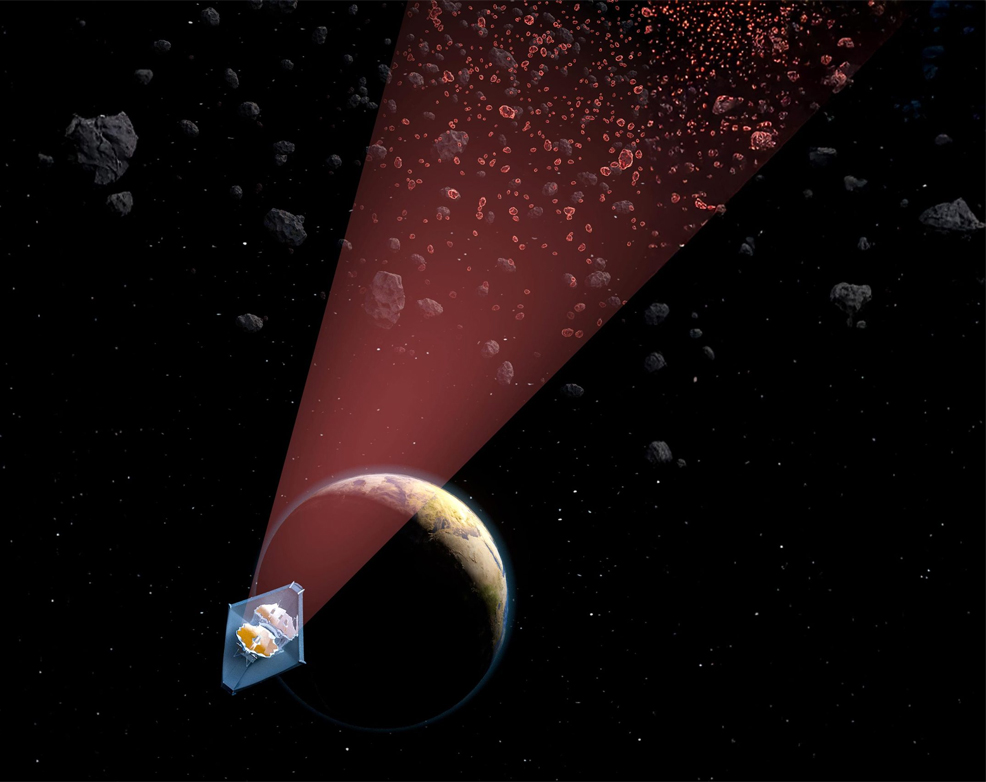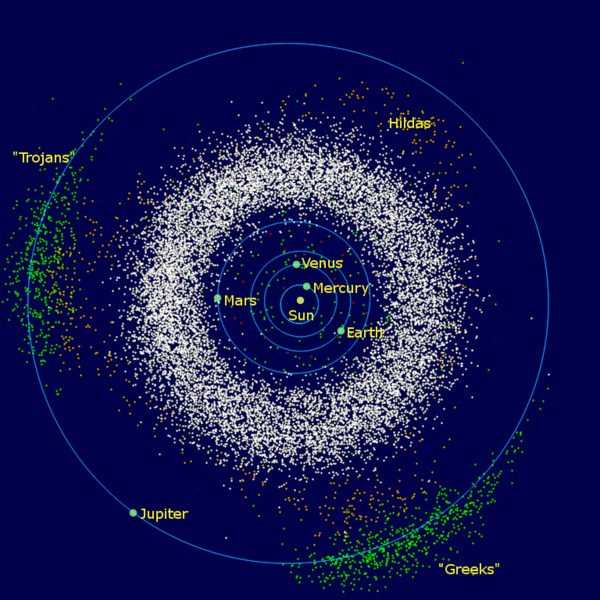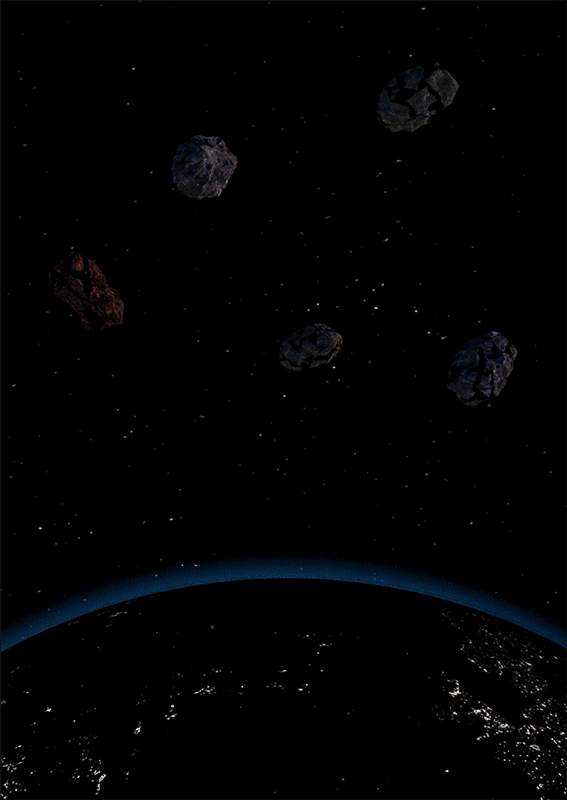
31st December 2024 Smallest asteroids ever detected in main belt Astronomers report using the infrared capabilities of the James Webb Space Telescope to find 100 of the smallest asteroids ever detected in the main belt, some measuring just 10 metres in diameter.
The asteroid that killed off the dinosaurs is estimated to have been at least 10 kilometres (6.2 mi) across – about as wide as Brooklyn. Such massive impactors are extremely rare, occurring just once every 100 million years or so, meaning the next one is unlikely to arrive for another 30–40 million years. In contrast, much smaller asteroids, about the size of a bus, can strike Earth far more frequently, every few years. These "decametre" asteroids, measuring just tens of metres across, are more likely to escape the main asteroid belt and migrate in to become near-Earth objects. If they make impact, these small but mighty space rocks can send shockwaves through entire regions, such as the 1908 impact in Tunguska, Siberia, and the 2013 asteroid that broke up in the sky over Chelyabinsk, Urals. Being able to observe decametre main-belt asteroids could reveal the origin of meteorites. Now, astronomers from the Massachusetts Institute of Technology (MIT) have found a way to spot the smallest decametre asteroids within the main asteroid belt – the huge rubble field between Mars and Jupiter where millions of asteroids orbit. Until now, the smallest visible objects had been about a kilometre in diameter, but their novel approach can pinpoint asteroids in the main belt as small as 10 metres across. The team has published a study in Nature, describing how they detected more than 100 new decametre asteroids in the main belt, ranging from the size of a bus to several stadiums wide, and including the smallest ever seen in this part of the Solar System. The researchers envision their method being used to identify and track asteroids that are likely to approach Earth.
"We have been able to detect near-Earth objects down to 10 metres in size when they are really close to Earth," says the study's lead author, Artem Burdanov, research scientist in MIT's Department of Earth, Atmospheric and Planetary Sciences. "We now have a way of spotting these small asteroids when they are much farther away, so we can do more precise orbital tracking, which is key for planetary defence." The study's co-authors, including MIT professors Julien de Wit and Richard Binzel, are primarily involved in searching for exoplanets – potentially habitable worlds outside our Solar System. In 2016, their team discovered the TRAPPIST-1 system, home to several Earth-sized planets in the habitable zone, and have since been using multiple telescopes to study them at various wavelengths. While filtering out noise – such as dust, gas, and stray objects – from these observations, they realised they could reuse their data to find asteroids. They applied "shift and stack", an image processing technique that involves shifting multiple images of the same field of view and "stacking" them to see whether an otherwise faint object can outshine the noise. Applying this method to asteroids in images originally focused on distant stars would be extremely computationally intensive, requiring thousands of images for each of the myriad scenarios being tested for where an asteroid is predicted to be. To overcome this critical constraint, the MIT researchers used state‑of‑the‑art graphics processing units (GPUs), able to handle vast amounts of image data at high speeds. This new study worked with data from the world's most powerful observatory – NASA's James Webb Space Telescope (JWST), which is particularly sensitive to infrared rather than visible light. As it happens, asteroids that orbit in the main belt are much brighter in infrared than at visible wavelengths, and thus are far easier to detect with JWST's infrared capabilities.
The team applied their approach to JWST images of TRAPPIST-1. The data comprised more than 10,000 images of the star, which were originally obtained to search for signs of atmospheres around the system's inner planets. After processing the images, the researchers were able to spot eight known asteroids in the main belt. They then looked further and discovered 138 new objects, all within tens of metres in diameter – the smallest main belt asteroids detected to date. They suspect a few asteroids are on their way to becoming near-Earth objects, while one is likely a Trojan – an asteroid that trails Jupiter. "We thought we would just detect a few new objects, but we detected so many more than expected, especially small ones," de Wit says. "It is a sign that we are probing a new population regime, where many more small objects are formed through cascades of collisions that are very efficient at breaking down asteroids below roughly 100 metres." "This is a totally new, unexplored space we are entering, thanks to modern technologies," Burdanov says. "It's a good example of what we can do as a field when we look at the data differently. Sometimes there's a big payoff, and this is one of them."
Comments »
If you enjoyed this article, please consider sharing it:
|
||||||









